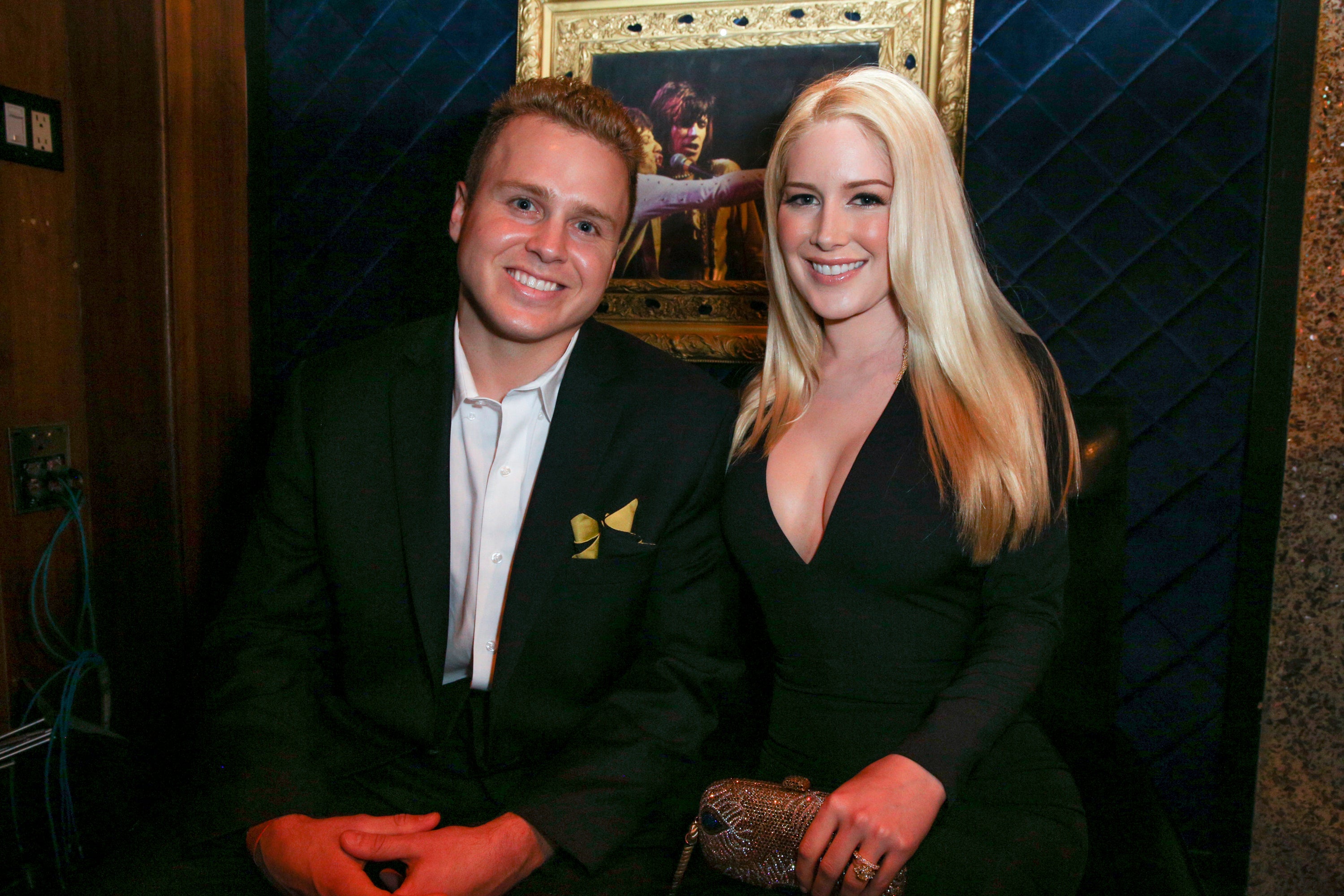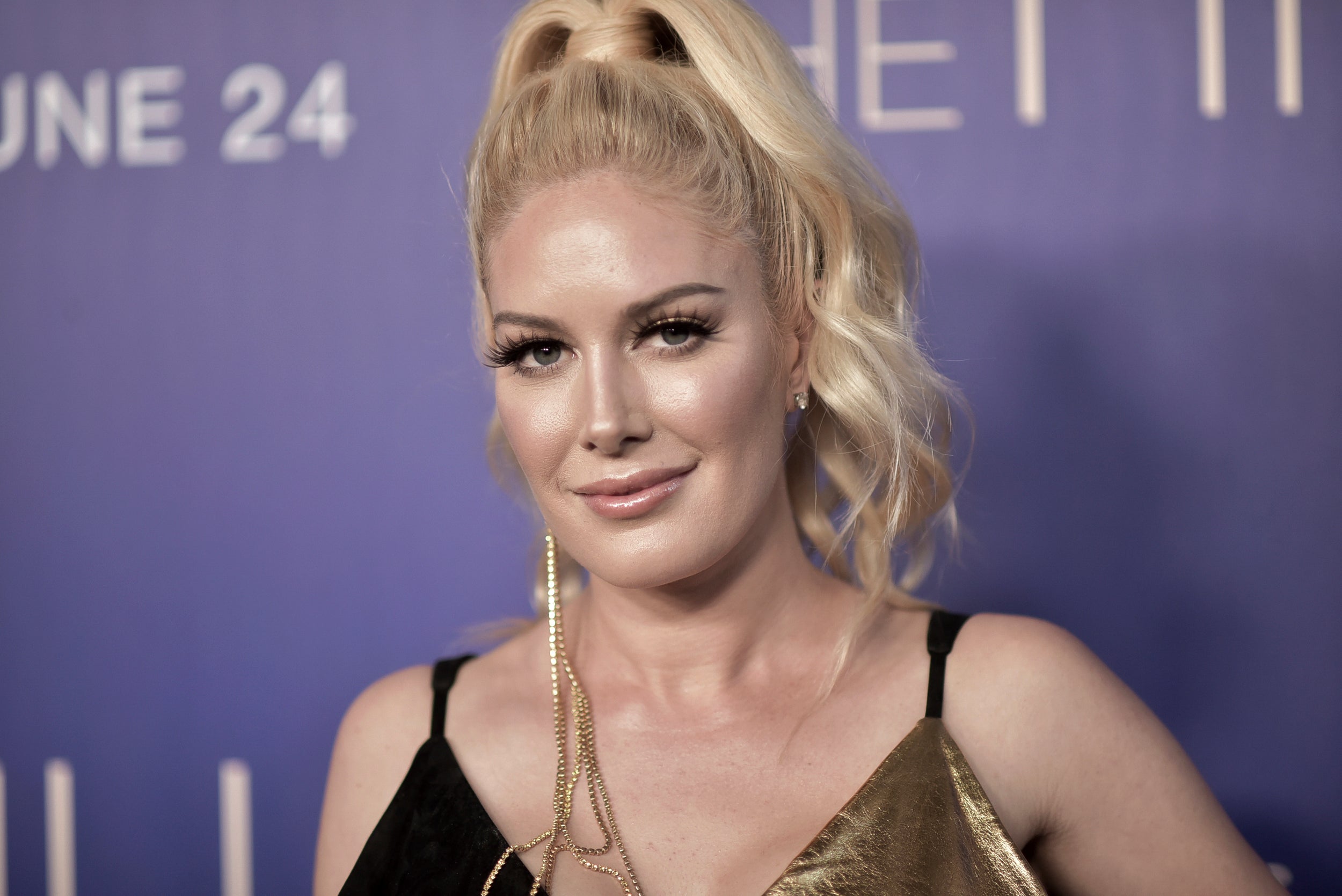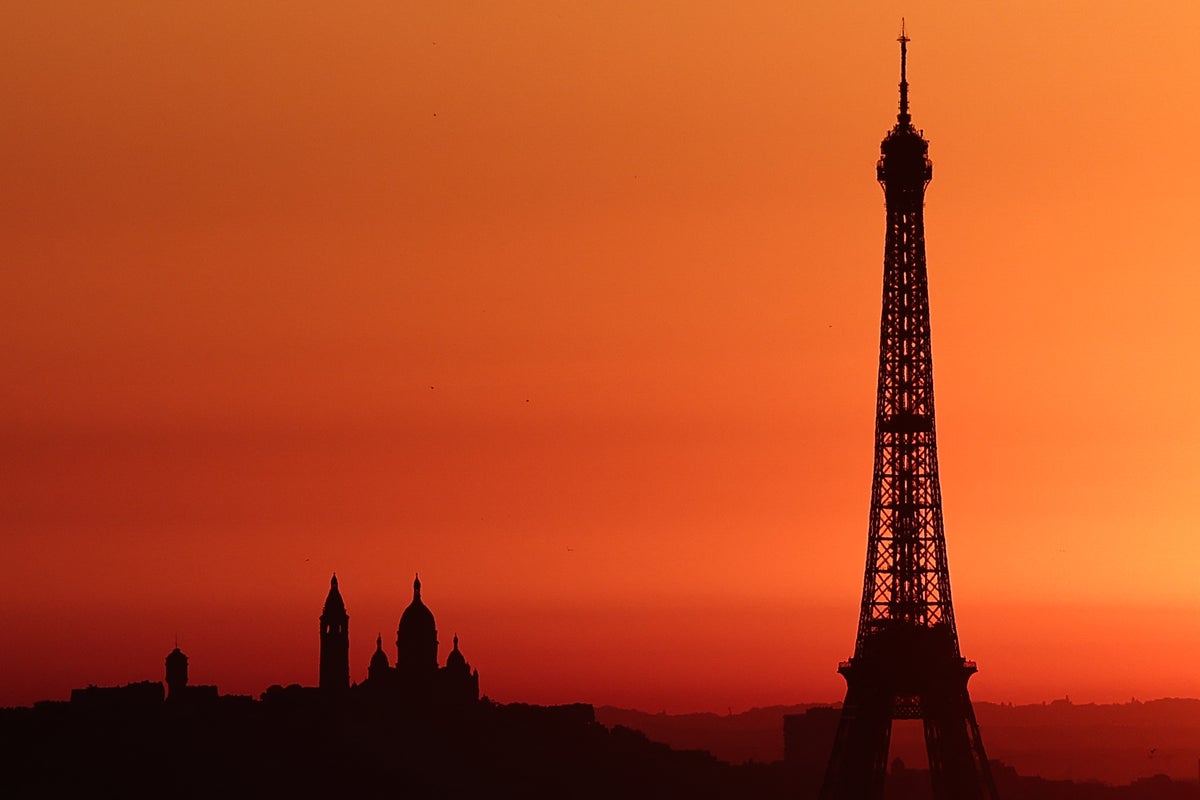Before Kim Kardashian, before Snooki or Molly-Mae, there was Heidi Montag. When we first met the reality star on screen, in MTV’s The Hills, it was 2006 and a generically sunny day in Los Angeles. The 20-year-old bleach-blonde sunbathed by a sprawling pool, pretending to read a weekly fashion magazine from behind giant black sunglasses. She lit up with excitement upon spotting Lauren Conrad – her then best friend – for the cameras of the reality phenomenon that chronicled their attempt to make it in the glamorous city.
At the time, reality TV was already home to the rebellious sprog of the rich and famous: Paris Hilton, Nicole Richie, Kelly Osbourne. But Montag represented something new: an ordinary girl given an extraordinary platform. She was filmed shopping, drinking, scrapping, and dating within Hollywood’s most coveted circle of early twentysomethings, one of the first truly homegrown reality TV stars.
But to be clear, Heidi Montag does not want to talk about The Hills. She’s driving through Malibu on the way to music rehearsals for her upcoming pop performance at the Mighty Hoopla festival in Brockwell Park, south London. Over a Zoom audio call, what she does stiffly admit is that filming the programme was a “surreal experience” and “definitely one of the first for an ensemble cast of normal people becoming reality stars”. Regardless of any current feelings about it, the show’s enormity had her on the covers of Rolling Stone, Maxim and Playboy and helped her branch out into fashion and music. In the years since, she’s been on reality shows such as Celebrity Big Brother, Celebrity Wife Swap and also a longtime wife to The Hills star Spencer Pratt (together they made endless tabloid headlines under the unparalleled couple name, Speidi), and mother to their two sons.
Fast-forward to 2024, and Montag was living a slower family life in LA, assuming she’d never make music again. “I just financially couldn’t, and with the kids, I just thought we were in a different place in life,” she explains, adding that she fully self-funded her 2010 album, Superficial. The near $2m it took to create and promote was almost all the money she and Pratt had. Then, her 2010 pop single “I’ll Do It” randomly went viral in China, generating more than a billion streams on TikTok. “I thought this was a sign to go back into pop music and re-follow my dreams and be there for the next generation,” she tells me.
Montag was well into the process of writing and recording for a pop career relaunch in January this year when their family home in the Pacific Palisades burned down in the wildfires that raged through LA. While in the midst of that emotionally charged and dangerous situation, Montag and Pratt responded in the only way they knew how: they documented themselves. “We’re so immersed in social media it’s almost habitual to do so,” explains Montag. Social media is, she says, “my reality show, my full docuseries”.
“In the hardness of things, it’s important to be able to share them,” she continues. “Sometimes you see things on the news and it doesn’t resonate like [it does] when you know somebody who is going through that. It was just another important story for us to tell.” In one video that was widely shared, she holds one of her sons and cries: “I just want to go home.” Of all the on-the-ground civilian footage of the fires, theirs was the most viewed and discussed; they did indeed put faces to the tragedy, illuminating how and why the fires spread and impacted both the privileged and less so.

It currently doesn’t look like Montag and her family will return to the city that made them famous. At present, they’re in a rental home in nearby family-friendly town Santa Barbara. “They’re saying it’s gonna cost five million to rebuild the house that cost a third of that; we just don’t have the finances, and I’m not sure we can keep our lot because you still have to pay a mortgage on it. I’m not sure what we’re going to be able to do,” she says sadly. “I’m just trying to work as hard as I can, as much as I can, to be able to afford any type of house or down payment on something for our kids.”
A surprise silver lining of the disaster was the response to the couple’s celebrity-style version of a GoFundMe: Pratt urged fans to stream Montag’s album Superficial. In a show of support, the public pushed it to No 1 on the US iTunes album chart. The single “I’ll Do It” went viral globally and has since amassed over 100 million streams on Spotify.
As listeners returned to the album, its once-dismissed elements – Montag’s deadpan delivery and the ironic, materialistic themes of partying and self-glorification – have been reappraised. Initially criticised as too shallow and inauthentic for a reality star attempting a pop crossover, Superficial now fits comfortably within the landscape of escapist, hedonistic club music. Alternative pop artists like COBRAH, Brooke Candy, and even Charli XCX, echo elements of Montag’s sound or energy. Real Housewives of Beverly Hills star Erika Jayne has pursued a similar aesthetic, and electronic underground favourite Slayyyter has even cited “I’ll Do It” as an inspiration. With this cultural shift, the second phase of Montag’s pop career is now underway; once again, on her own terms, but with more generous eyes watching her.
Enjoy unlimited access to 100 million ad-free songs and podcasts with Amazon Music
Sign up now for a 30-day free trial. Terms apply.
Try for free
ADVERTISEMENT. If you sign up to this service we will earn commission. This revenue helps to fund journalism across The Independent.
Enjoy unlimited access to 100 million ad-free songs and podcasts with Amazon Music
Sign up now for a 30-day free trial. Terms apply.
Try for free
ADVERTISEMENT. If you sign up to this service we will earn commission. This revenue helps to fund journalism across The Independent.
As a child growing up in the small ski town of Crested Butte in Colorado, Montag always knew she was going to be famous. “It was a smaller version of Aspen that was more exclusive,” Montag says, “Dolly Parton came there, [as did] Madonna and Michael Keaton and all these really big producers, so whenever celebrities came in, I just always felt this wind of significance and fate for myself.” She undertook acting and dance classes, imagining a future of being seen by the masses. “My mom always jokes that I was in a hot pink Barbie Ferrari one minute with my fake fur coat, and then next, I had a backwards hat on and I was playing in the mud. I’ve always had two parts of myself and I felt ‘called’ for Hollywood and for success.”
A year abroad in Italy further chiselled her dream into shape: fashion would be her gateway to fame. She lived with a very successful family whose generous mother loved to take Montag shopping and let her go out to clubs. “I became friends with the grandson of Missoni, who took me to the fashion shows.” She’s referring to the dynasty of the fashion label founded by Ottavio and Rosita Missoni in 1953. “I was backstage with the family and met Margherita Missoni before she became the designer for it,” Montag remembers.

But fashion wasn’t the only viable option. Early on in The Hills, Montag was waitressing and taking voice lessons, dreaming of a pop career. A manager pitched her as the next Avril Lavigne, but Pratt introduced her to producer David Foster, who promised a Britney Spears-like future. “He said, ‘I’ll get you a record deal,’” she recalls. But it was a 360 deal – meaning they’d take a cut of everything she was already making for herself. “I barely had any money, so giving more away was a non-starter.” Instead, she and Pratt went indie, saving up and funding every aspect of the music, paying for promoters and producers themselves.
It was right near the end of The Hills run that Montag would realise her musical ambitions. By that point, there had been increasingly dramatic seasons of the show where Montag and Pratt were concerned (the couple have since said this was encouraged by producers and staged by the pair themselves because the cast would receive bonuses if ratings went up). The press villainised Speidi, calling them the most hated couple in America. In January 2010, Montag revealed to media outlets that she had 10 cosmetic procedures done in a single day; among those were a brow lift, ear-pinning, a chin reduction, a second nose job and a second breast augmentation. She had almost died during surgery, and it would end up taking about a year to fully recover. That same month, Superficial was released, selling only 1,000 copies in first-week downloads, which led to it being slammed in the press.
Montag’s surgery press tour courted enormous backlash from people; many called Montag fame-hungry, a typical product of Hollywood. But very few celebrities, if any, publicly claimed to have had “work” done at that time, despite it being widespread. For the few supportive onlookers, Montag’s act of honesty was refreshing. “I definitely was breaking the barrier and the fourth wall of what everyone was secretly doing in Hollywood,” reflects Montag. “Part of being a trailblazer is when you are the first one to do something, you’re usually the most criticised for it. That’s something I can accept because I never want to be a liar; that’s not the way that I’m built.”
Nowadays, celebrities and influencers are regularly emerging transformed, appearing 20 years younger, with young girls and women left to speculate on how other women can become unattainably perfect overnight. “That is one of the reasons I thought it was important to be honest about it,” says Montag, “because so many people have bad self-esteem or look at these magazines and think: how are they just so naturally beautiful and perfect? I didn’t want anyone to think that you just grow into a new nose or you just [start] anti-ageing. That’s just not the truth and the reality of what so many of these people were doing. I wanted to tell the story of, hey, this is what I did and what a lot of people do; to break that facade and that mirage of what’s going on in Hollywood. Yeah, there are a lot of beautiful people, but there’s a lot of unnaturally beautiful people as well, and it cost them a lot of money and time and being cut open and surgery.”
The open approach to cosmetic surgery – combined with the reality TV drama and hedonistic bangers made for the gay club – led to Montag becoming something of an LGBT+ beloved star, the sort of Mighty Hoopla performer the queer crowds of London are most excited for. For these communities, cosmetic surgery can be gender-affirming or an expression of freedom. “I’ve had a lot of people from the LGBTQ+ community tell me how thankful they were I encouraged them to be able to do what they want with their bodies and be who they are. You never really know how you’re helping other people.”

Part of Montag’s recent revival and reappraisal by the press and public is down to her relationship with Pratt, still strong all these years later. “We both love to laugh and find whatever is funny at the moment, but we just really prioritise each other and always have, and that’s definitely the secret,” she says of their longevity. Pratt is a public cheerleader for all Montag’s twists and turns, sharing and promoting her projects on social media. He once declined to manage Kim Kardashian, but, ever-entrepreneurial, was prompted to start his crystal jewellery business, Pratt Daddy, by Montag: “He went to a gem show and said I’m gonna buy crystals. And I said, absolutely not – if you’re gonna buy some, you need to sell some. He said, great, I’m gonna start selling.”
Repeatedly, Montag mentions her self-belief and never-wavering knowledge that she would be a celebrity – where does this confidence come from? “I have a deep faith and I really pray hard about a lot of things,” she says. “I feel like where God is calling my life to go is where I go, and that’s how I operate.”
When it came time to name her forthcoming dance-pop album – some of which she’ll debut live at Mighty Hoopla – Montag and a collaborator looked back to her short-lived, ultra-2000s fashion line: Heidiwood. The name felt fitting for a new era of tracks crafted with Chase Icon, Snow Wife, and other rising stars in the Hollywood pop scene. From bootcut jeans and micro miniskirts to glossy, hyper-produced Y2K-inspired anthems, it’s all part of Montag’s fame-obsessed, pop culture–saturated vision. “Welcome to a world where there’s only one name/ Plastered on the Walk of Fame,” she talk-sings over the deliciously claustrophobic club beat of “Heidiwood,” her collaboration with Chase Icon.
Montag still represents the most recent iteration of the American dream: wake up, create content and keep hustling. “My sister’s name is Holly and it was always ‘Hollywood’. I’m like, ‘No, it’s Heidiwood!’” remembers Montag, soon before the line goes dead and she’s swallowed up by the demands of rehearsal. With the idea and that word “Heidiwood”, she says, “I actually felt like I was manifesting my own world of fame, naturally gravitating towards Hollywood and success within it.”
‘Heidiwood’ is released on 30 May; Heidi Montag plays the UK’s biggest pop music festival, Mighty Hoopla, on 1 June at Brockwell Park, London; mightyhoopla.com





